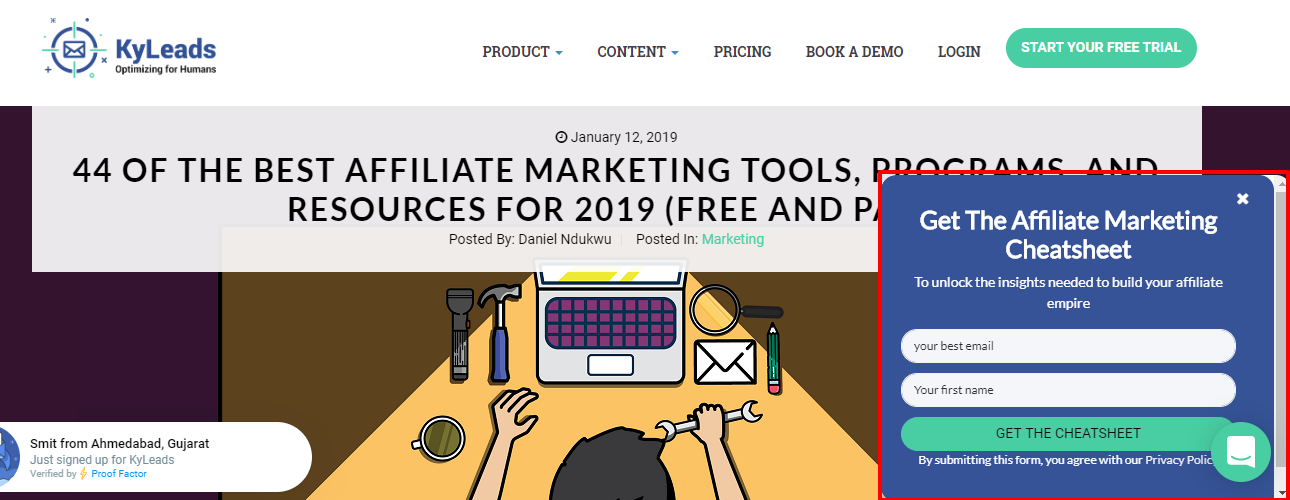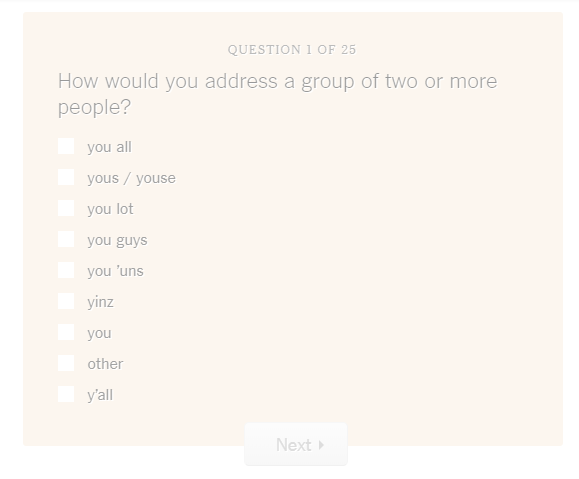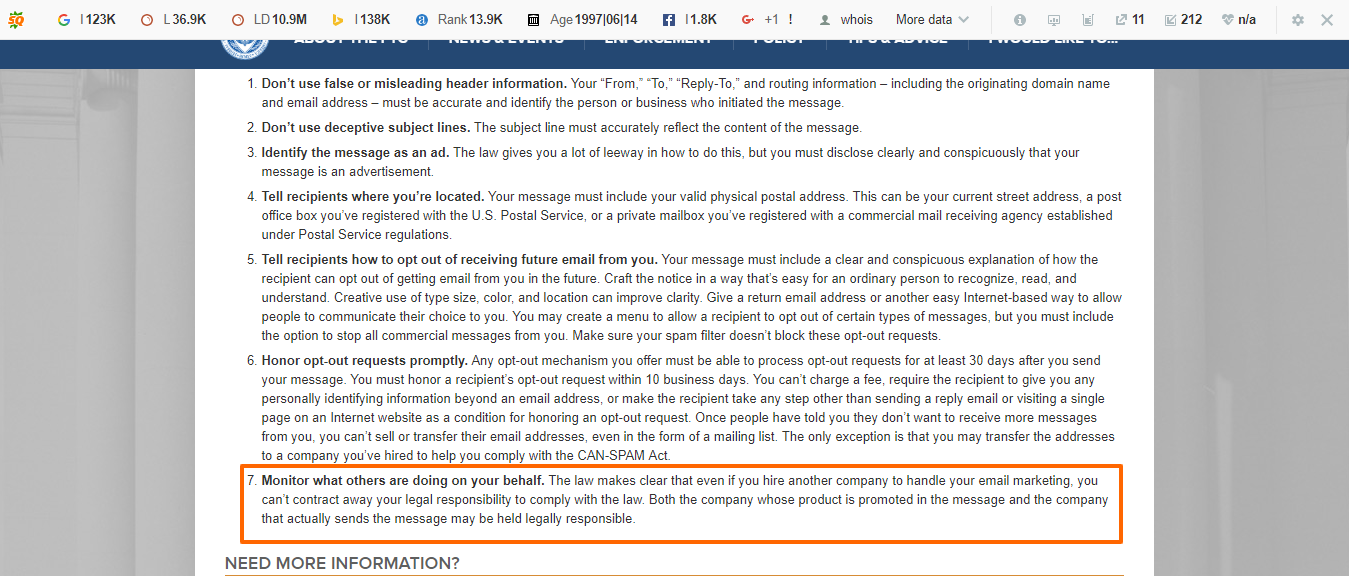Optimizing your website to grow your mailing list is hard so the temptation to buy an email list is real.
Enter your credit card details, get the contact information, and email them until they buy.
It’s like the perfect shortcut to growing your mailing list and, by extension, your business.
The bad news is that it doesn’t work nearly as well as we’d like and may be one of the worst things you can do. With purchased emails, you’ll only serve to burn bridges before they’re built.
Put simply, DON’T buy an email list.
This is the internet so I can’t expect you to take my word for it. Instead, I’ll give you a few solid reasons why you should never purchase emails and what to do instead.
1. There are laws against purchasing emails
The recent GDPR regulation and even the CAN-SPAM Act address what happens when you buy or rent a mailing list for commercial purposes. They spell out, in no uncertain terms, that you shouldn’t be sending messages to people who’ve not given you permission.
Even people who’ve given you permission and no longer want to get your messages should be able to opt-out. If you use deceptive opt-out practices, it could spell trouble as well.
One thing to note is that you can also be liable for partners promoting your products and services to rented lists.
Make it clear to all of your partners that you won’t tolerate anyone who uses purchased emails for marketing.
You can view the full document here. The area outlined in red basically says you can’t contract out your responsibility for complying with the law. In other words, don’t buy an email list.
2. The penalties for buying an email list are stiff
In May 2018, GDPR rolled out in the European Union and businesses were spooked. That’s for good reason, the fines instituted under the new policy are, in my humble opinion, exorbitant. A small business can be forced to close its doors if it makes a mistake.
GDPR has a fine of up to ten million Euros or 2% of annual global turnover – whichever is higher. In certain scenarios that can climb to twenty million Euros or 4% of annual global turnover. The fines are applied at the discretion of officers.
The CAN-SPAM Act is almost as tough. For every email that violates the act, you may face a fine of up to $42,530. What would your liability be if you buy an email list with 5,000 names?

3. Reputable email marketing services won’t let you send those emails
Many email marketing services ask you how you got the list of contacts during the import process. Usually, the software will prompt you to click a checkbox stating that they’re opt-in emails.
If someone lies about it, the number of spam complaints will quickly single them out and they’ll be pushed off the service.
Of course, you can always get around this by using an email marketing service that’s not so reputable but that comes with its own challenges. Generally speaking, they use shared IP addresses. If someone is using the service to send unsolicited emails then their bad reputation can affect everyone.
They can’t get their emails to land in the inbox and neither can you. It’s money down the drain.
4. There’s no context for the recipient
After you buy an email list, you’re sending to complete strangers.
When these types of emails land in your inbox, what do you do? If you’re like me then you either delete or ignore them. If the person is too insistent then I’ll unsubscribe or take an hour out of my day to track them down and report it.
Apart from that, there’s little to no context when you purchase emails and send messages to those people. They don’t know who you are, what you offer, or if you’re trustworthy. What makes you think they’ll click on the links you send?
In the end, the majority of the money you spend on purchased lists is money down the drain.
5. You’ll be labeled a spammer
What happens when too many of your emails get marked as spam? Email clients like Gmail and Yahoo will send many of them to the spam folder.
I have a bad habit, I only check messages in the spam folder once a month. Maybe you’re better or worse. The simple fact is that people don’t give the spam folder much attention.
Your messages don’t get seen and it puts your business in a tricky position. Even if you have an opt-in list, it’ll be difficult for you to get in contact with the people who want to hear from you.
6. Your deliverability will suffer over the long term
This follows on the heels of the last point. I mentioned that major email clients will automatically send your emails to the spam folder. Even if you repent and no longer buy email lists, your reputation will continue to suffer.
It takes time and focused effort to repair your email sending reputation. Some tactics will work for you and some won’t. The best strategy is to never get a bad reputation in the first place. If you’re in doubt because your open rates are declining or you’ve purchased lists in the past then you can check your reputation using the resources here.
7. Horrible response rates
Honestly, this should be the main reason why you don’t’ buy an email list. Yes, your reputation will be affected, you may be fined, and other negatives. The most important reason, the reason we send emails in the first place, won’t be accomplished.
There’s little to no ROI associated with it. You can’t come up to a stranger on the road, show them a product, and tell them to buy within the space of a few seconds.
You may have a genuinely good offer but people aren’t interested because they didn’t ask to see it. That’s why inbound marketing is more effective than outbound marketing in many industries.
In one scenario, people requested information. In the other scenario, people are having the information forced down their throat. If you want an ROI, build your list yourself.
8. Others are sharing the same list
Yes, the people who opt-in to your mailing list may also opt-in to other mailing lists in your niche. The difference is that they know who you are and are expecting your emails.
If you and 40 other people are sending unsolicited emails to the same address, the person will eventually get fed up. The most likely scenario is that they’ll abandon the email address and open a new one. There are also people who have email addresses exclusively for marketing content so their real inboxes can avoid the clutter.
Whatever the case, your open and delivery rate will shrink like Ant Man.
9. Don’t by an email list because it’s bad form
I like to think most people who’re doing business are honest. Unfortunately, they’re not. I have firsthand experience with that.
In a different time and place, appearances mattered. Now, not so much. I’m going to assume you’re cut from a different cloth and care about your reputation as much as you care about making money.
If that’s the case, know that purchasing mailing lists is the epitome of bad form. This is the information era. Your mistakes are just a tweet away from going viral.
How you should actually grow an email list
Now that we’ve made the case against purchasing email lists, it’s time to make the case for something else – opt-in mailing lists.
There are many benefits to mailing lists you’ve built over time but the most important one is that they produce an outstanding ROI. Some estimates put it as high as 70:1. Let’s look at a few ways to grow an email list the right way.
Identify your target audience
If you’ve done it then it seems obvious. The truth is that it’s anything but. When most businesses start out, they want to target anyone and everyone because, technically, anyone can use them.
The problem is that not everyone will use your products and services. Instead of trying to appeal to everyone. It’s important to identify the people who can benefit the most from your solution and create messages that appeal to them.
Survey your ideal customers
Once you’ve settled on a target audience, you don’t want to jump in and start asking them to join your mailing list. What do you have to offer and will it even appeal to them?
Those are good questions.
Create surveys that help you understand who they are and what they want. What are their wants, needs, and desires? After the survey, get on the phone with a few and pick their brains further.
When you’re done, you’ll have a clear understanding of what your audience wants. With that information, you can create lead magnets, ads, and product pages that people will respond to.
Use Popups
We’re a little biased because we have awesome software that makes popups and opt-in forms. With that being said, they work.
A well-designed content upgrade can convert anywhere from 4-7% of your email subscribers. A perfectly timed exit-intent popup will yield similar results. The key is to make a lead magnet your target customers actually care about.

For example, a lifestyle website covers topics like fashion, family, travel, and cooking. You could create a single lead magnet that gives away fashion tips in exchange for an email address. This will work to an extent but a better option would be to create a lead magnet for each of your main topics and offer them to the right visitors. This will help you segment your audience and increase your conversion rates.
Use Quizzes
Lead generation quizzes are a different beast altogether. On average, popups will convert 5% of your visitors. Lead quizzes will convert 6x that amount or more. Not only do they convert more visitors into subscribers, but they also reveal deep insights about who they are and what they want.
That’s just not possible with any other lead generation device.
The key with lead quizzes also understanding your audience but they can be more general which makes them more versatile.
A great location for your quiz, as long as your brand lends itself to it, is on your homepage. Create a quiz that will appeal to the largest segment of your audience and watch as your homepage traffic turns into email subscribers that buy from you over time.
Here’s an example of a quiz that generated hundreds of thousands of views in a few days.

Together, this process will help you skyrocket your conversions.
Conclusion
Buying an email list is something that seems attractive on the surface but can end up costing you much more.
This article has looked at the pitfalls of purchasing emails. Some of them are monetary penalties and some are penalties that affect your reputation. Whatever the negative side effect, it’s too expensive for any brand to sustain.
Dive deeper into the alternative methods for growing your mailing list mentioned here and refer to the resources if you get stuck.
As always, let me know what you think in the comments and don’t forget to share.
